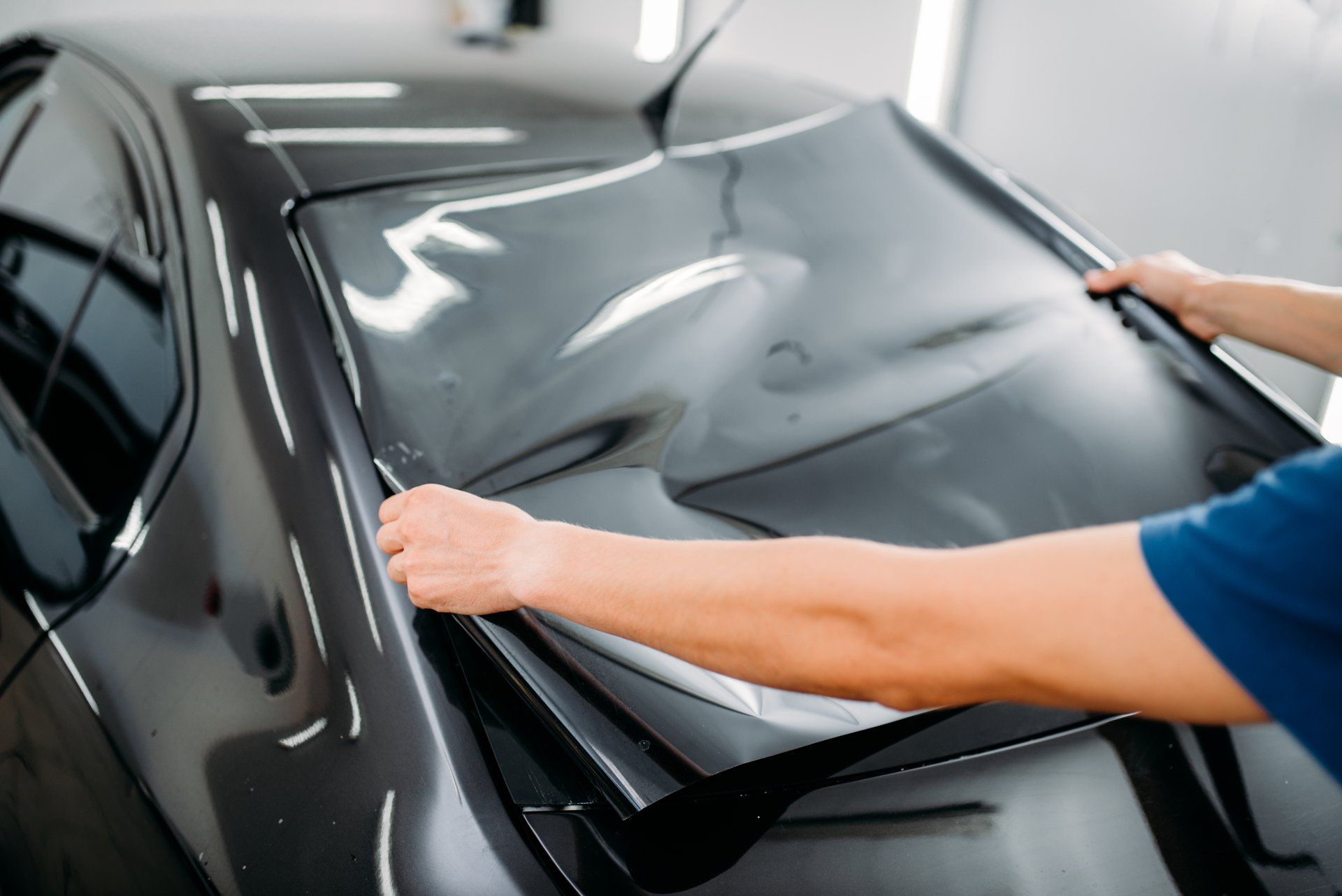The Process of Expert Home Window Tinting Explained
From selecting the right movie type to the meticulous preparation of home windows, each action plays a crucial role in attaining a remarkable application. Complying with these preliminary preparations, the cautious cutting and application of the movie need precision to avoid blemishes.
Selecting the Right Home Window Movie
The initial consideration is the type of movie, which can vary from dyed, metalized, to ceramic movies (window tinting). Dyed movies mainly give privacy and visual enhancement, while metalized films reflect heat and UV rays, enhancing energy efficiency.
Next, think about the film's Visible Light Transmission (VLT) portion, which figures out just how much light goes into the area. A reduced VLT gives better privacy and warmth denial however might minimize all-natural light dramatically. In addition, the movie's solar warmth gain coefficient (SHGC) is critical; a lower SHGC suggests better thermal efficiency, assisting to preserve indoor convenience.

Preparing the Windows
As soon as the appropriate window film has been selected, the following action is thoroughly preparing the home windows for installation. This prep work is critical for achieving ideal adhesion and making certain a perfect look post-installation.
The very first task entails cleaning the windows diligently (window tinting). A premium glass cleanser is crucial, ideally one that is ammonia-free to stay clear of damaging any type of window seals or tint products. Making use of a lint-free cloth or paper towels, specialists must get rid of any kind of dirt, dirt, or oil, paying special attention to the edges and corners where debris usually accumulates

Reducing the Movie
An accurate technique to reducing the film is necessary for guaranteeing an ideal fit on the prepared windows. This action requires both skill and interest to detail, as mistakes can cause unsightly gaps or overlaps that compromise the aesthetic and practical high qualities of the tint.
Prior to cutting, the specialist should gauge the home window measurements properly, accounting for any kind of unique forms or shapes. It is advisable to make use of premium window movie, as this material often tends to be more flexible during the reducing process. The movie is typically laid flat visit this page on a clean, smooth surface, and a sharp energy knife is used to make sure clean edges.
To achieve optimum outcomes, lots of experts make use of layouts produced from previous installments or utilize software to develop exact patterns. An usual method entails Resources including an added margin to the layout, enabling changes throughout the application stage.
In addition, cutting the film in a controlled setting decreases the threat of contaminants impacting the glue side. By sticking to these precise techniques, window tinting experts can make certain that the film not just fits perfectly but likewise does successfully in time, enhancing both appearance and functionality.
Using the Tint
After meticulously reducing the movie to the correct dimensions, the following step includes using the color to the window surface area. This procedure begins with making certain that the home window is clean and devoid of any dust, debris, or deposits that can impact adhesion. A customized cleaning solution is commonly used, followed by comprehensive drying with a lint-free towel.
As soon as the surface is prepared, the installer will meticulously place the tint film versus the glass. It is vital to straighten the movie accurately to avoid misplacement, as any errors can cause an unprofessional look. To facilitate this, the installer may utilize a light haze of application option on the adhesive side of the film, enabling small repositioning if needed.
Utilizing a squeegee, the installer will certainly after that start to push the film onto the glass, working from the facility in an outward direction to get rid of air bubbles and ensure a company bond. This technique is critical, as it guarantees a smooth and perfect finish. Throughout the application, attention to information is important to stop folds or flaws, making sure that the color not only enhances aesthetic appeals however additionally supplies the desired capability.
Final Examination and Treatment
The last examination is a vital step in the home window tinting process, making sure that the installation satisfies both visual and useful requirements. During this stage, specialists diligently take a look at the mounted color for any kind of imperfections, such as bubbles, folds, or imbalances. A thorough assessment additionally includes examining the adherence of the film to the glass, in addition to its uniformity and general look.
After the assessment, proper care and upkeep directions are supplied to the client. It is vital to educate them regarding the suggested timeline for cleansing the colored windows, generally encouraging a wait of a minimum official site of 30 days after setup to permit the adhesive to heal completely. Clients must be educated on appropriate cleaning items and techniques, stressing the avoidance of ammonia-based cleansers that can harm the color.
Additionally, professionals should suggest consumers on the significance of regular upkeep to prolong the life of the color. This consists of routine checks for indicators of wear or damage and responding immediately to any type of problems. By making sure a detailed final examination and providing clear treatment standards, home window tinting specialists improve consumer fulfillment and the long life of their job.
Conclusion
The specialist home window tinting process incorporates a number of important steps that make certain premium results. Choosing the appropriate movie type, preparing the windows meticulously, precisely cutting the film, and applying it with precision are vital for accomplishing a perfect finish. An extensive last evaluation assurances that all standards are fulfilled, while correct post-installation treatment is important for keeping the color's longevity and performance. Abiding by these procedures inevitably improves both the visual charm and performance of the tinted windows.
Comments on “How to Select the Right Color for Your Car's Window Tinting”